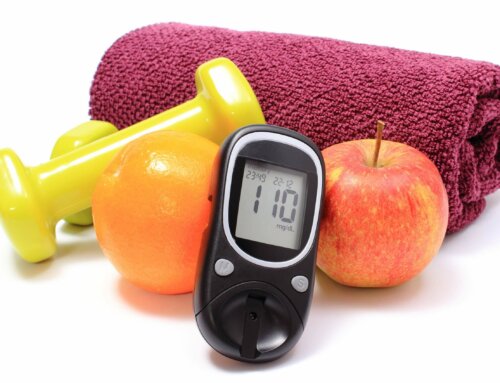We often share questions from our patients who experience the same concerns as you do. Many patients complain that it is difficult to have a true conversation with their physician due to time limited office visits. Most health care providers are now engaged in a computer screen to document on an electronic health record. Also most patients are generally uncomfortable asking questions involving nutrition since they rarely get a simple understandable answer.
This week in diabetes practice, I was asked diverse questions, all pertaining to nutrition. I would like to share them with you.
Why does it matter if I eat white foods including white bread, white rice or white pasta? If I eat the correct portion which should not elevate my blood sugar, does it really make a difference to my over all health?
Researchers at Pennington Biomedical Research Center in the United States reports “a poor diet leads to a weak ecosystem of gut bacteria that increases the risk of metabolic disease”. Diabetes is considered a metabolic disease. Included in the diet they discussed were the white foods – rice, bread, pasta and pastries. All of these foods are heavily processed and stripped of fiber and nutrients. “Healthy individuals posses a diverse gut microbome but a reduced microbiotic richness may give rise to type 2 diabetes”. Along with improved nutrition and a smaller spike in blood sugar response, stick to whole, natural, balanced and diverse foods with high fiber content like vegetables. This should help blood sugars and gut microbome to lead to improved health.
I’m always in a rush in the morning, I thought you just have to eat breakfast; does it really matter which type of oatmeal I choose? I make a packet of flavored apple/brown sugar instant oatmeal and off I go.
Although it is better than no breakfast at all, most instant packaged flavored oatmeal is processed and contains sugar, artificial flavor and preservatives. Instead, take the time to cook steel cut oats the day or night before and reheat in the morning. This will give you a healthful hearty breakfast with a high amount of resistant starch. As mentioned in other articles, resistant starch will help keep blood sugars in check. Steel cut oats are whole grains which are cut into small pieces on a mill; they are not robbed of their fiber. Steel cut oatmeal contains the lowest glycemic index of all the oatmeal choices and when mixed with a handful of walnuts, almonds or pumpkin seeds, offer a complete breakfast which will keep you satiated without large blood sugar swings. Rolled oats are a third option with benefits somewhere in the middle. Rolled oats are processed which gives them a higher glycemic index and blood sugar response compared to steel cut oats. Remember to always add protein source such as nuts, nut butter, seeds, eggs, cheese, to breakfast when you are eating cereal or another carbohydrate for complete nutrition.
What about eating nuts? One person says “eating nuts are fat and fat makes you fatter” and the next person says “nuts are an essential part of a healthful diet”.
Yes, this is an extremely common question since the internet is buzzing with reasons why you should eat nuts but always in portion size due to calorie and protein content. Nuts have been shown to cut cravings which are a reoccurring issue for those with diabetes. “Those who ate nuts like almonds, walnuts or a nut butter spread at breakfast secrete more appetite suppressing hormones to help control hunger, cravings and balance blood sugars for up to 12 hours”. People with type 2 diabetes who eat nuts as part of a Mediterranean diet had a lower risk of depression. “Compared with non-nut eaters, people who ate 10 grams of nuts, which is about 9 almonds, had a 23% lower chance of death from any cause”. Eating nuts seems to help reduce visceral belly fat, a common problem for those with diabetes. Nuts contain many nutrients and vitamins. For example, Brazil nuts contain selenium and almonds contain vitamin E. These nutrients may help with skin elasticity. Remember portions because just 2 Brazil nuts are a serving and 6 almonds are a serving. Vitamin E from foods including nuts may reduce dementia by 25%. Try to eat raw, unbleached and unsalted nuts for best health. Soaking nuts overnight in water and roasting them at 120 degrees for 10-15 minutes is also a good nutritional option.
Can artificial preservatives and dyes really affect me and my health?
Try to concentrate on eating wholesome, natural, unboxed and unbagged foods that are nutrient dense and high in fiber. Include foods such as vegetables, legumes and fruits, monounsaturated oils, whole grains, seeds, nuts, low fat dairy and lean protein. “Removing synthetic and non-nutritive food additives in food will help reduce allergies and other unpleasant side effects”. Watch out for artificial food coloring and dyes added to foods. Be aware of coloring in sugar-free gelatin, sugar-free candies, snack foods, boxed cereals, and frozen low-calorie and low-carbohydrate treats. Food dye “has been linked to hyperactivity, food allergies, respiratory inflammation and possible increased risk of cancer”. Carrageenan is another additive to eliminate. It is a common food additive which thickens foods and makes food creamier. Carrageenan is made from red seaweed but contains no nutritional value. Research states “it may raise systemic inflammation, lead to Alzheimer’s, heart disease or stomach issues”. BHT is often added to foods as a preservative found in cereals and cookies, including sugar-free cookies. BHT prevents oils from oxidizing, becoming rancid and helps maintain freshness. BHT is banned in many countries, but is allowed in the US, and may be connected to ADHD, asthma, hormonal/endocrine disrupter and possibly cancer. Sodium nitrate is another preservative that is used in highly processed meats including hot dogs, bacon, bologna, pastrami, sausage, salami and jerky. Sodium nitrate may raise the risk of diabetes, heart disease, damage blood vessels, and increase blood pressure. Eating processed meats which are high in sodium and saturated fat are never a good choice for anyone with diabetes but nitrates make these foods worse. Look for lean, organic, unprocessed and grass-fed meats for the highest quality of nutrition.
What about “fitness foods” after my workout?
Protein bars, chocolate snack bars, nut bars coated in honey, energy drinks or shots, store bought fruit smoothies, granola cereal mixes and already made trail mixes should be avoided. People believe these foods are healthy and “good for you” and low in calories, but this is untrue. These selections contain too much sugar, caffeine in energy drinks or shots, artificial additives, preservatives and lots of calories. Stick to fresh fruit, low-fat plain Greek yogurt , mini low-fat cheeses , whole grain crackers, un-buttered air-popped popcorn and homemade trail mixes with nuts, seeds and a handful of dried raisins, prunes, dates or apricots. A few chocolate chips, that is 70% cocoa or higher, could be added to the mix for a special treat.
Become educated to help “clean up your eating”. Try the smartphone app named Fooducate which grades foods A-D for nutritional content and value and offers healthier suggestions. Get familiar with food labels and before purchasing a new product and look at all of the ingredients. Look for words you can pronounce and that do not contain chemicals, dyes, or artificial ingredients. Look for products that contain 3-5 ingredients. Go to a nutritional workshop or find a registered dietitian to learn more about your food. Find quality online sources to learn more about nutrition. Eat healthful foods and your body will thank you!
Feel free to email me your questions at [email protected] if you would like to share them with ADW diabetes.
NOTE: Consult your Doctor first to make sure my recommendations fit your special health needs.







i heard wheat can cause imflamation.